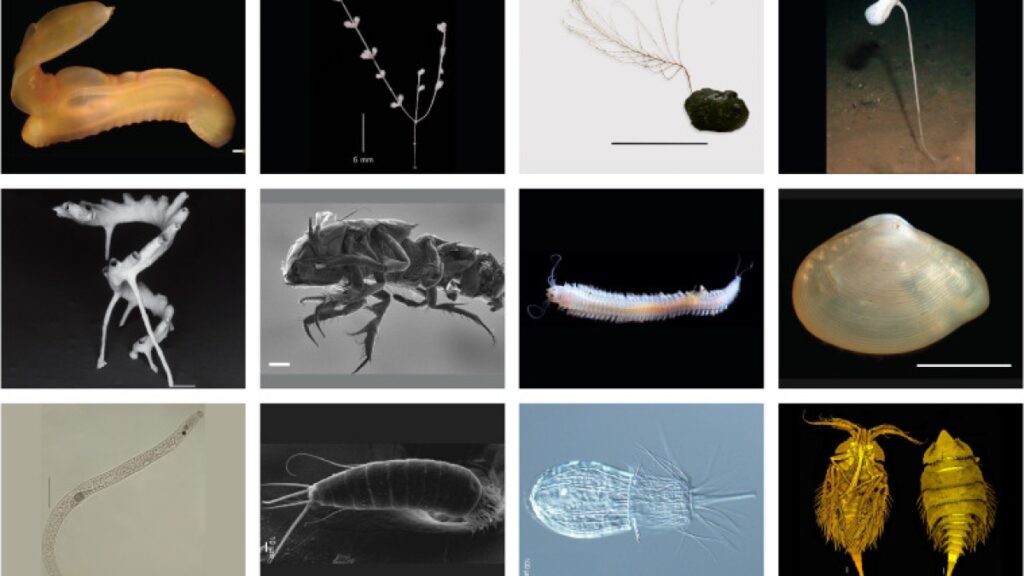A study has identified more than 5,000 new species living in deep-sea habitats in the Pacific Ocean in a region known as the Clarion-Clipperton Zone (CCZ), a seabed targeted for mining in the coming years.
The zone extends roughly 6 million sq km (2.3 million sq miles) between Hawaii and Mexico.
Researchers said on Thursday that they had identified 5,578 species in the zone, of which 92 percent were new to science.
“There are 438 named, known species from the CCZ,” said the study’s lead author, Muriel Rabone, deep-sea ecologist at the Natural History Museum London. “But then there are 5,142 unnamed species with informal names.”
“These are species that haven’t been described yet, meaning we might know the genus but can’t identify the species. It is actually a lot more than I thought.”
Most species recorded were arthropods, invertebrates with exoskeletons made of chitin, such as shrimp, crabs and horseshoe crabs. Others were worms in the annelid and nematoda groups.
The scientists used taxonomic surveys for the area that began decades ago as well as data made available by the International Seabed Authority, which has requested companies interested in mining collect and share environmental information.
The findings illustrate that “the CCZ represents significant undescribed biodiversity” and “the novelty of the region at deep taxonomic levels”, said the study, published in the Current Biology journal.

‘Knowledge gap’
The zone, which receives little sunlight, has become the world’s largest mineral exploration area. Its seabed contains deposits of nickel, manganese, copper, zinc and cobalt, according to the research.
In July, the International Seabed Authority, an intergovernmental body that oversees “mineral-resources-related activity”, will start accepting applications from companies that want to mine the ocean’s floor.
In September, one mining executive told ABC News that his company could extract the minerals without harming the seabed.
“I mean, why on Earth shouldn’t we explore new frontiers? We need to mix it up,” Gerard Barron, the CEO of The Metals Company, a Canadian-based firm exploring ways to mine the CCZ, told the United States broadcaster.
“The question is, what’s this impact? How can we mitigate those impacts? And how does that compare to the known impacts of land-based activity? And I think that’s a decision that society is going to have to face,” he said.
But researchers say that more investigation needs to be conducted to assess how to protect those ecosystems.
“Taxonomy is the most important knowledge gap we have when studying these unique habitats. We have to know what lives in these regions before we can begin to understand how to protect such ecosystems,” said study co-author Adrian Glover, merit researcher at the Natural History Museum London.
“We are on the eve of some of the largest deep-sea mining operations potentially being approved,” he said. “It is imperative that we work with the companies looking to mine these resources to ensure any such activity is done in a way that limits its impact upon the natural world.”
How many species are found in the Pacific Abyss? Our new paper says >6000 and less than 500 have names. Lots of taxonomy to do! With @MurielRabone @adrg1 @helena_wiklund @LupitaBribiesc1 @bokamero @DanielOBJones @mucofloris @NOCnews @NHM_Sciencehttps://t.co/WgmK5nieit
— DiscoveryCollections (@tammy_horton) May 25, 2023
‘Big risk’
According to the research, mineral exploration started in the 1960s, and there are 17 contracts for mineral exploration covering 1.2 million sq km (463,000sq miles) with companies from several countries, including Canada, China, the United Kingdom and the US.
“If there are mining operations and we don’t know what species are there, that’s a big risk,” Rabone told media outlets.
“It’s really important to do that baseline taxonomy, to find out what species are there, and that creates the bedrock for the next stage, which is then the ecology – what are the [species’] functional traits? Is there a role in the ecosystem where, if they’re mined, there’ll be some weird cascade effect?” she said.
On first glance, the deep abyss of the #Pacific Ocean might appear inhospitable.
But it’s teeming with life. A whole range of creatures call these muddy depths home, including this charming purple sea cucumber.
New research is starting to reveal this #deepsea diversity 🧵1/8 pic.twitter.com/BZXBk1PGiL
— Natural History Museum (@NHM_London) May 25, 2023


